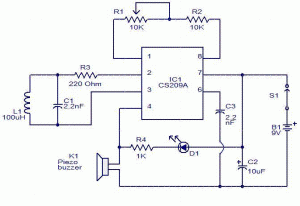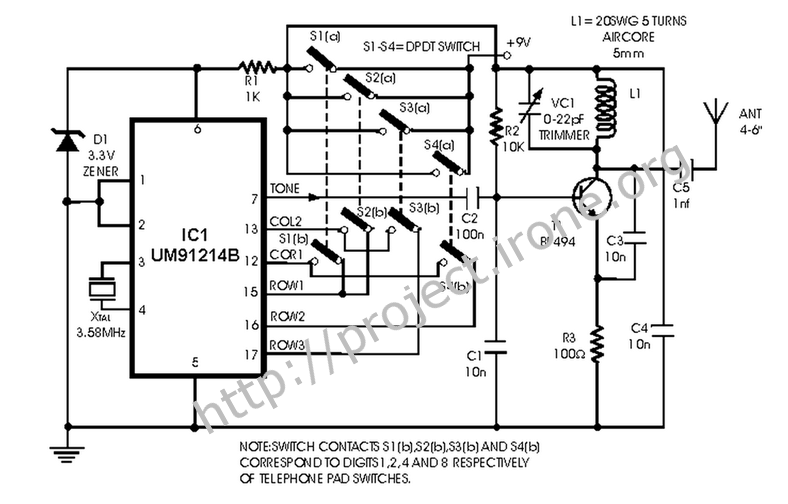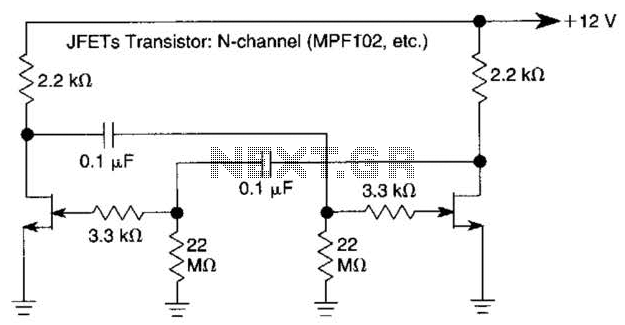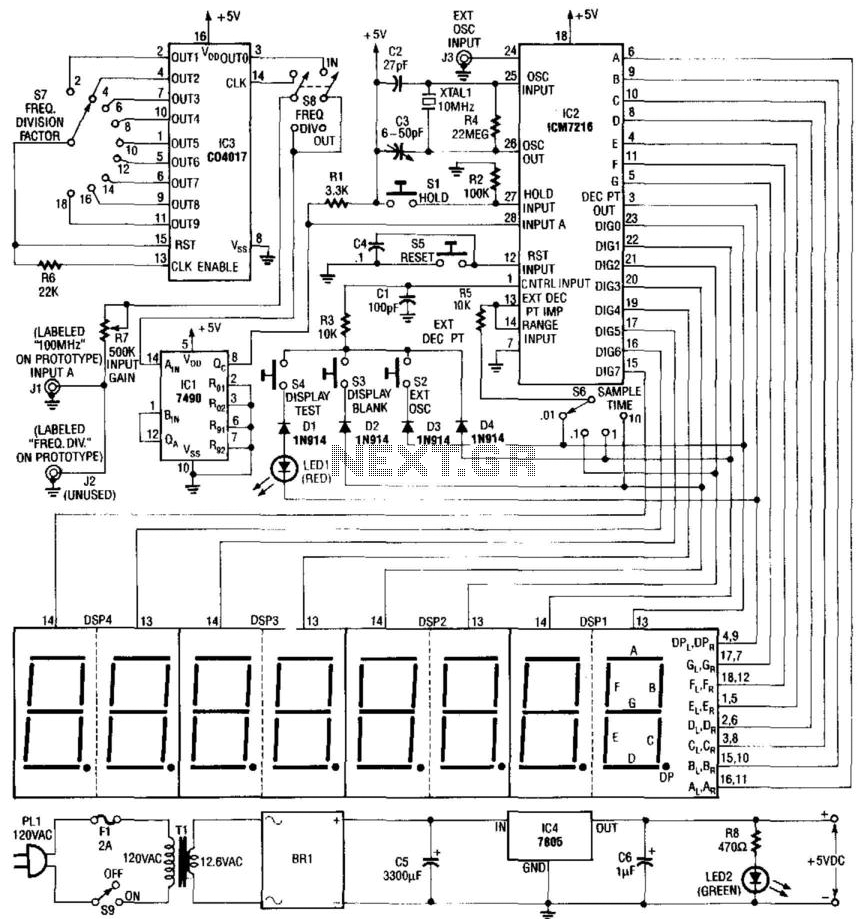
SAB6465 Frequency Divider
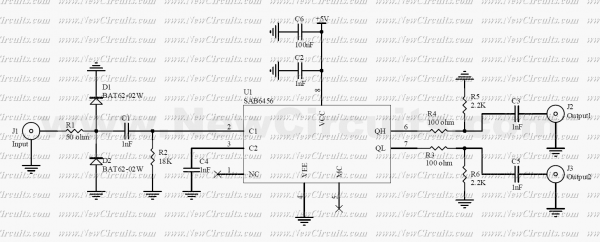
The circuit is a divider by 64 used in many RF applications like satellite receivers, digital tuners, frequency counters, PLL, etc. The heart of the circuit is an IC named SAB6456, but you can use SDA2101 or other equivalent chips. Each output is NOT of the other.
The described circuit functions as a frequency divider, specifically designed to reduce an input frequency by a factor of 64. This is particularly useful in radio frequency (RF) applications, where precise frequency control and manipulation are critical. The primary component of this circuit is the SAB6456 integrated circuit (IC), which is designed for high-performance frequency division. Alternatives such as the SDA2101 or other compatible chips can also be utilized, ensuring flexibility in component selection based on availability or specific design requirements.
The circuit typically consists of the frequency divider IC, which is configured to divide the incoming signal by 64. The input signal, which can originate from various RF sources, is fed into the IC. The internal architecture of the SAB6456 includes a series of flip-flops and logic gates that work together to achieve the desired division ratio. The output of the IC will produce multiple output signals, each representing the divided frequency. It is important to note that the outputs are not synchronized with one another, meaning that they operate independently and can be used for different applications or further processing stages.
In practical applications, the circuit can be integrated into satellite receivers to process signals received from satellites, allowing for the extraction of information at lower frequencies suitable for further amplification and demodulation. Similarly, in digital tuners and frequency counters, the ability to divide the frequency accurately allows for precise tuning and measurement of radio signals. The phase-locked loop (PLL) systems also benefit from such frequency dividers, as they require stable and accurate frequency references to maintain lock on the desired signal.
When designing a circuit based on this description, it is essential to consider the power supply requirements of the chosen IC, as well as the input and output impedance to ensure compatibility with other components in the system. Proper PCB layout techniques should be employed to minimize noise and interference, which can adversely affect the performance of RF circuits. Additionally, decoupling capacitors should be placed close to the power pins of the IC to stabilize the power supply and reduce voltage fluctuations during operation.The circuit is a divider by 64 used in many RF applications like as satellite receiver, digital tuners, frequency counters, PLL, etc. The heart of circuit is an IC named SAB6456, but you can use SDA2101 or other equivalent chips. Each output is NOT of the other. 🔗 External reference
The described circuit functions as a frequency divider, specifically designed to reduce an input frequency by a factor of 64. This is particularly useful in radio frequency (RF) applications, where precise frequency control and manipulation are critical. The primary component of this circuit is the SAB6456 integrated circuit (IC), which is designed for high-performance frequency division. Alternatives such as the SDA2101 or other compatible chips can also be utilized, ensuring flexibility in component selection based on availability or specific design requirements.
The circuit typically consists of the frequency divider IC, which is configured to divide the incoming signal by 64. The input signal, which can originate from various RF sources, is fed into the IC. The internal architecture of the SAB6456 includes a series of flip-flops and logic gates that work together to achieve the desired division ratio. The output of the IC will produce multiple output signals, each representing the divided frequency. It is important to note that the outputs are not synchronized with one another, meaning that they operate independently and can be used for different applications or further processing stages.
In practical applications, the circuit can be integrated into satellite receivers to process signals received from satellites, allowing for the extraction of information at lower frequencies suitable for further amplification and demodulation. Similarly, in digital tuners and frequency counters, the ability to divide the frequency accurately allows for precise tuning and measurement of radio signals. The phase-locked loop (PLL) systems also benefit from such frequency dividers, as they require stable and accurate frequency references to maintain lock on the desired signal.
When designing a circuit based on this description, it is essential to consider the power supply requirements of the chosen IC, as well as the input and output impedance to ensure compatibility with other components in the system. Proper PCB layout techniques should be employed to minimize noise and interference, which can adversely affect the performance of RF circuits. Additionally, decoupling capacitors should be placed close to the power pins of the IC to stabilize the power supply and reduce voltage fluctuations during operation.The circuit is a divider by 64 used in many RF applications like as satellite receiver, digital tuners, frequency counters, PLL, etc. The heart of circuit is an IC named SAB6456, but you can use SDA2101 or other equivalent chips. Each output is NOT of the other. 🔗 External reference

